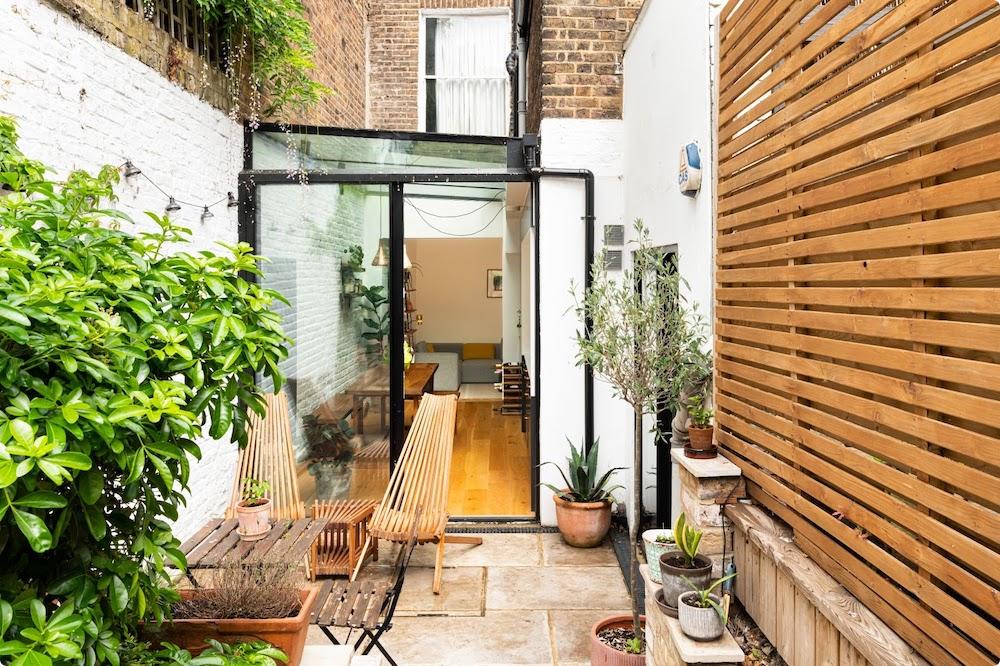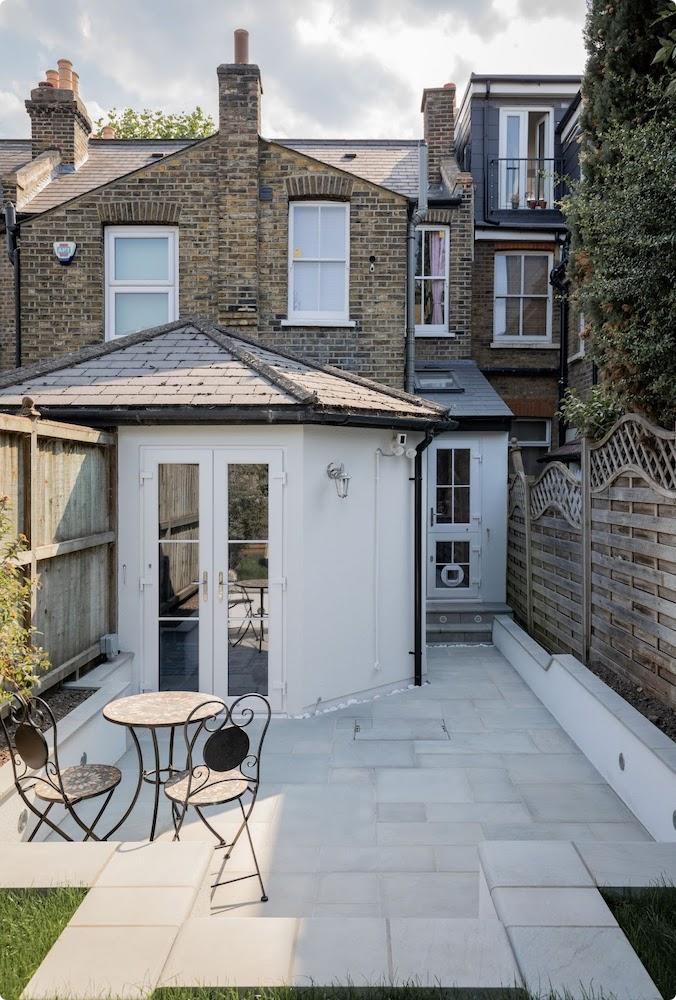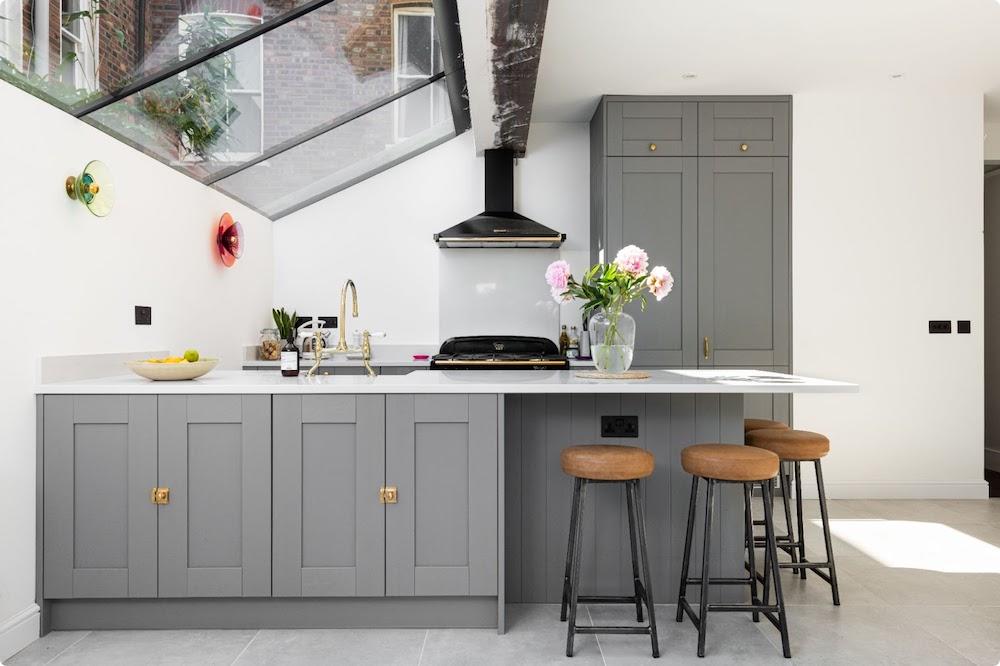Do you need an architect for your side return extension?

As a general rule of thumb, if your project is going to alter the exterior of your property, we advise having an architect on board. It’s the best way of ensuring that your construction is as safe and legal as possible so that you get the aesthetic result you want with as few surprises on the way as possible. Read our guide to whether you need an architect for a 360 view of everything they can provide for you.
How much space do you need to build a side return extension?
One of the main selling points of opting for a side return extension is that the amount of space it takes up is minimal. The extended space takes advantage of unused space between properties, rather than cutting into any garden space you may have like rear extensions do.
Do you need planning permission for a side return extension?
Side return extensions don’t always require planning permission as they can often be carried out under permitted development rights. Some factors that may be taken into consideration are size and height of your proposed renovation project, whether you’re impacted by any listed properties or conservation areas and proximity to your neighbouring property. Use the checklist below as a rough guide for whether your project falls within your permitted development rights:
- Sits to the side (as long as this will not face a highway) of the house (not the front)
- Uses similar building materials to the existing house
- Takes up less than 50% of the size of the land around the original house ("original" being the latest of when the property was built or if it was built before 1948, then as it stood on 1st July 1948)
- Takes up less than 50% of the width of the original house
- Is less than 4m in height (or less than 3m if within 2m of a property boundary)
- Has eaves and a ridge that are no taller than the existing house
If you’re not sure whether your project falls under permitted development rights, book in a free consultation call with our friendly team today.
Do you need a Party Wall Agreement for your side return extension?
Party walls act as a kind of buffer between terraced houses, semi-detached houses and some detached houses – these can be a literal wall, an outhouse or an unseen boundary that you share with a neighbouring property.
If your project affects a party wall or you plan on excavating within 3 to 6 metres (depending on the depth of the new foundations) of your neighbour’s property, then you need to obtain permission from the affected households at least 2 months before any construction occurs. Due to the intimate nature of semi-detached properties, it’s really important to make sure each step is followed accurately.
So, if you’re planning on extending your home, it’s best to check with your neighbours first. If you don’t, you may have to pay for their property damage and legal costs if they take you to court. To avoid this situation altogether, it's worth getting a surveyor out to check the property line and speak with them about how far they think you'd be able to extend before coming into contact with any neighbouring properties.
Find out what steps you might need to take with a free advice call with one of our consultants.

How long does it take to build a side return extension?
As with any construction project, there’s no one-size-fits-all answer for how long a side return extension on your property will take to build. However, you can usually rely on a timeline between 3 and 5 months and (as we touched on before) having an experienced architect on board can really help keep you on track. For more insight into renovation timelines, check out our guide to how long renovations usually take.
Is building a side extension really worth it?
If you have space to the side of your property (many Victorian terraces, for example, have unused alleyways), a side return extension is a great way of creating extra space in your home. Side return extensions (sometimes referred to as side infills) allow you to expand out into an alleyway, turning an unused area into much desired living space. There are also a number of great benefits that choosing this kind of extension could grant you:
Increasing space
Opting for a side return extension means adding extra room onto your property to use as you deem necessary. Some people dream of utilising their newfound space for a slick open-plan kitchen while others may set aise square metres for storage. It’s totally up to you so dream big!
Inviting in more natural light
Having a side return kitchen extension carried out can turbo-charge the amount of natural light that gets into your kitchen. Typically, there would have been a wall separating the outside world and your kitchen so it would have been a lot darker. What’s more, you can adapt your extension to include large glass panels, skylights or sliding glass doors to really let the light in.

Adding value to your property
Taking advantage of your unused space and creating even more room, light and character is a fantastic way of adding value to your property. So, when you invest in a side return extension now, you’re investing in better offers from buyers should you decide to move in the future.
Click here for more great ideas for your side return extension and try out our Quick Quote Calculator to see what your renovation options are.








